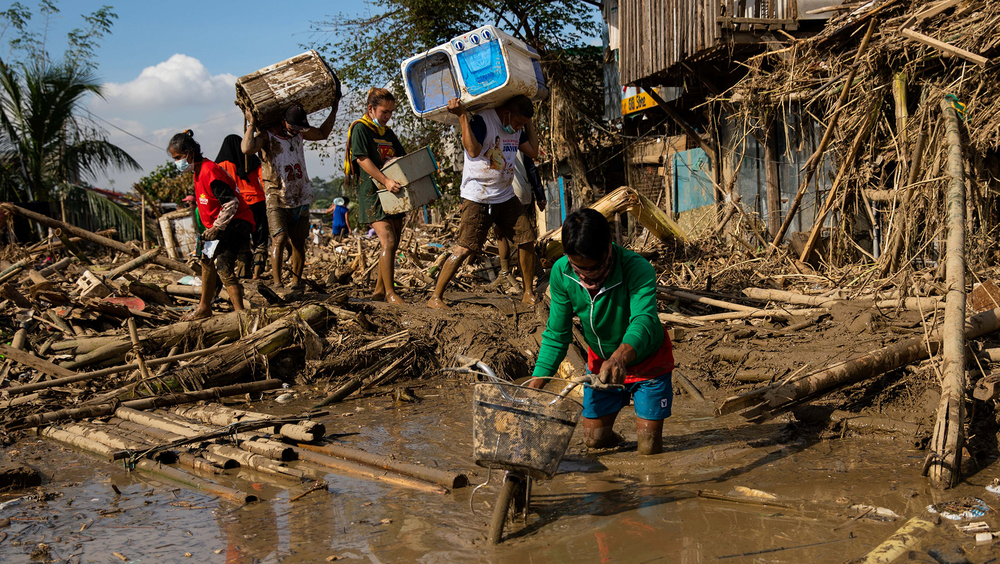
A weeks-long barrage of destructive storms in Southeast Asia has claimed hundreds of lives and is stretching aid funding and disaster responses amid the coronavirus pandemic.
Typhoon Vamco is the latest storm to strike both the Philippines and Vietnam since early October. Vamco hit central Vietnam on 15 November, bringing heavy rains and metre-high storm surges to areas already dealing with severe floods and landslides. The storm, known as Ulysses in the Philippines, churned across the main island of Luzon days earlier, submerging whole towns with roof-high flooding in some areas.
Philippine authorities say at least 80 people are dead or missing after Vamco as of Monday, and some 320,000 people have left their homes. At least 239 people are dead or missing from Vietnam’s disasters.
“Each time they start rebuilding their lives and livelihoods, they are pummelled by yet another storm,” said Nguyen Thi Xuan Thu, the head of Vietnam’s Red Cross.
In both countries, Vamco trampled a path set by earlier storms, including early November’s Typhoon Goni. Known as Rolly in the Philippines, it was the most powerful typhoon to hit the country since 2013 – and the strongest anywhere in 2020.
Vamco is the fifth major storm to hit the Philippines since early October, and at least the seventh to strike Vietnam.

The UN’s migration agency, IOM, said the string of storms in the Philippines has stretched aid responses. Vietnam’s Red Cross society describes its weeks-long flood response – expected to last months longer – as one of its biggest relief efforts.
The disasters continue while the coronavirus pandemic surges. Disaster management authorities in the Philippines were forced to lift coronavirus health safety measures in hard-hit Cagayan Province.
The storms have sparked multimillion-dollar aid appeals in several countries still digging out from severe floods. Even before Vamco hit, the UN said at least 2.7 million people would need urgent aid in the Philippines, Vietnam, Cambodia, and Laos.
Flooding is common during Asia’s varied monsoon seasons, and tropical cyclones worsen these risks. But disaster responders say the rapid pummelling of storms in such a short period has been unprecedented.
Climate change is making today’s disasters more intense and unpredictable, though the ability to link global heating to individual disasters is evolving.
Scientists with the World Weather Attribution project will try to measure the role of human-caused climate change in Vietnam’s extreme rains, the Red Cross announced this month. Earlier “extreme event attribution” research found the marks of climate change across a range of disasters, from a recent heat wave in Siberia to off-season flooding in Bangladesh.
Both the Philippines and Vietnam are among the 10 countries worst hit by climate disasters over the last 20 years, according to the environmental analysis group Germanwatch.
On Monday, Philippine President Rodrigo Duterte pledged to create a “build back better task force” to oversee typhoon recovery, though it’s unclear if this would be replicating existing disaster management bodies.
Evan as communities dig out after Vamco, new disaster threats are on the horizon: Philippine authorities say there could be up to three more storms by the end of the year.
il/ag